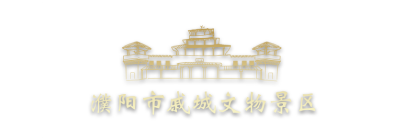中华第一龙
1987年,河南濮阳西水坡遗址发现了远古时期的龙文化遗存,它由四组蚌塑动物图案组成。
In 1987, relics of the dragon culture of ancient times were found in Xishuipo Site, Puyang, Henan, which consist of four groups of animal designs made of clamshells.
第一组位于一座墓穴中,墓主人是一位高大魁梧的老年男性,头南足北,仰身直肢葬,脚下是用人胫骨和蚌壳摆放的勺形图案。墓主人两侧摆塑龙虎造型,西侧的虎,张口露齿,四肢交替作行走状,兽中之王的威风神态毕现。东侧的龙,昂首曲颈,弓身长尾,前爪扒,后爪蹬,状似遨游苍穹。蚌塑龙生动逼真、惟妙惟肖,而且从中国龙的艺术发展历程来看,它的头、爪、尾以及整体构图,已经具备了发展到后来中国传统文化龙的大部分要素和创意。对出土蚌壳进行碳十四测定,其距今约6500多年,这是我国目前考古发现年代较早、形制最为完备的龙艺术形象,专家学者把它誉为“中华第一龙”。 濮阳由此获得“华夏龙都”、“中华帝都”的美誉。
The first group was in a tomb. The tomb owner was a tall old man, with the head towards the south and feet towards the north, face upwards and arms and legs stretched straight. Below the feet, there is the spoon-shaped design constituted by human tibia and clamshells. On both sides of the tomb owner, there are the tiger and dragon. The tiger in the west opens its mouth with the teeth exposed, and is walking, showing the great power as the king of animals. The dragon in the east raises its head and bends its neck. With an arched body and a long tail, it looks like flying in the sky. The dragon made of clamshells is very vivid. From the artistic development history of the Chinese dragon, its head, claws, tail and the whole composition had already possessed the most elements and creativity of the dragon in traditional Chinese culture developed later. With the detection of C14 on the clamshells excavated, we have found that the clamshells dated back to more than 6500 years ago. It is the earliest and most complete artistic image of the dragon in archaeological discoveries so far in China. Experts honor it as the “No.1 Dragon in China”. Puyang therefore has won the good reputations of the “Capital of the Dragon in China” and the “Capital of Emperors in China”.








